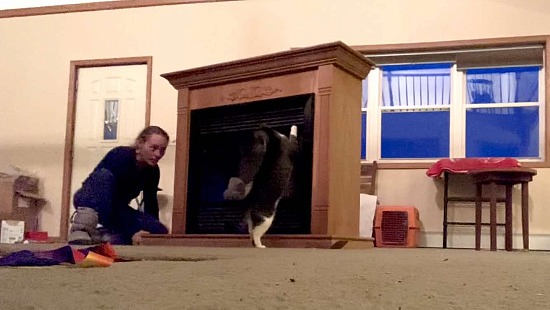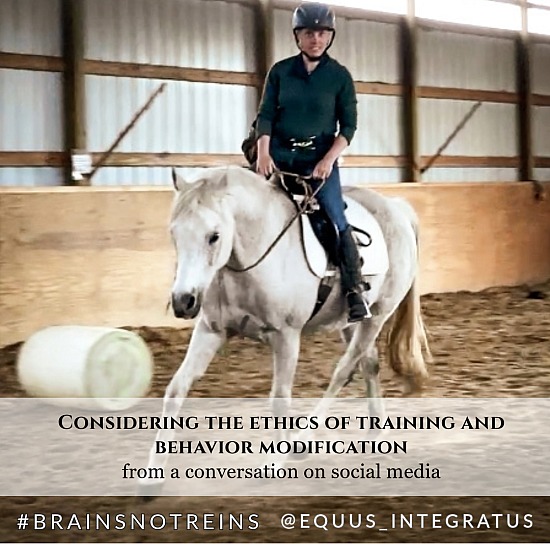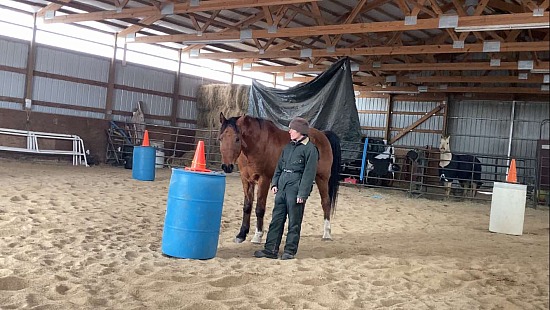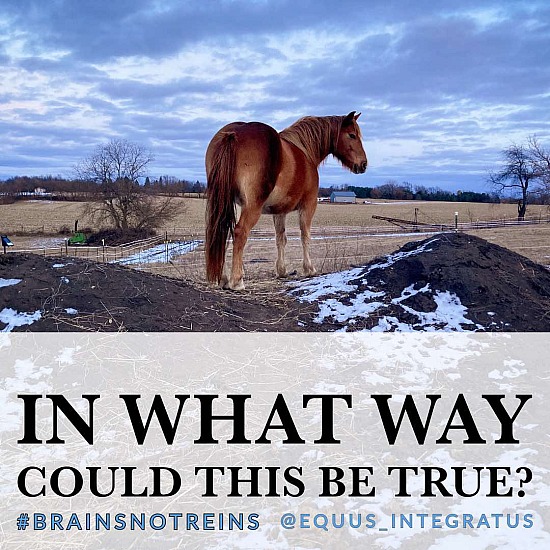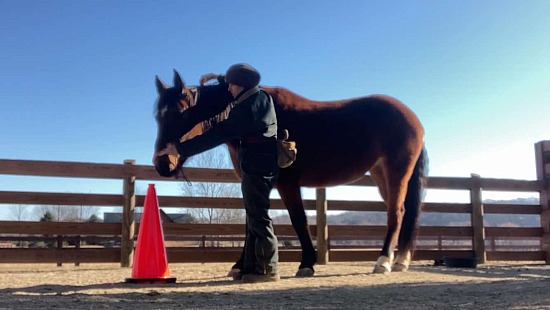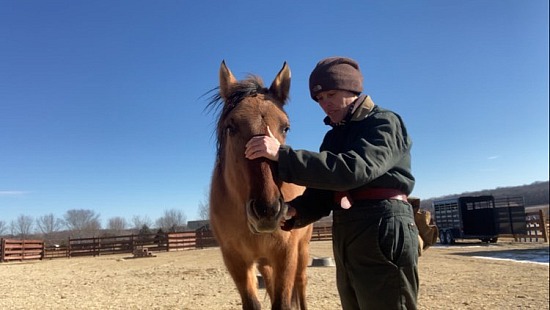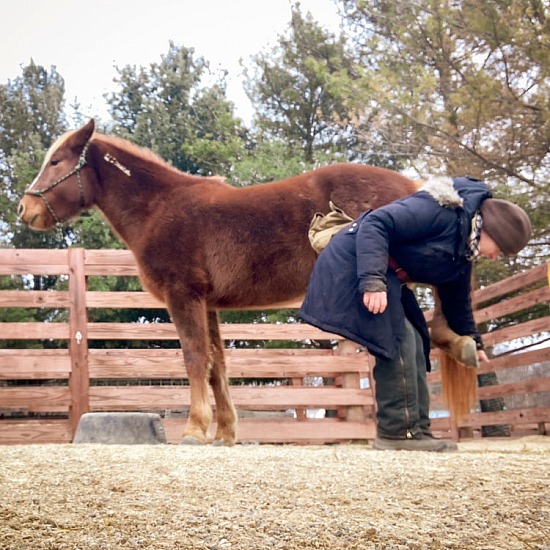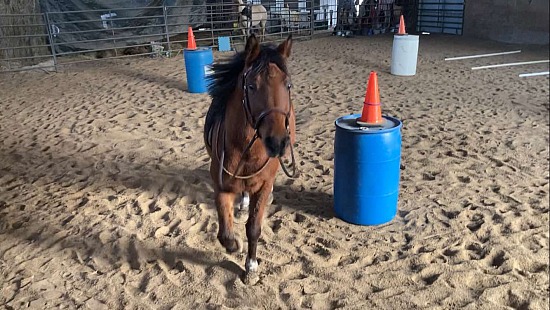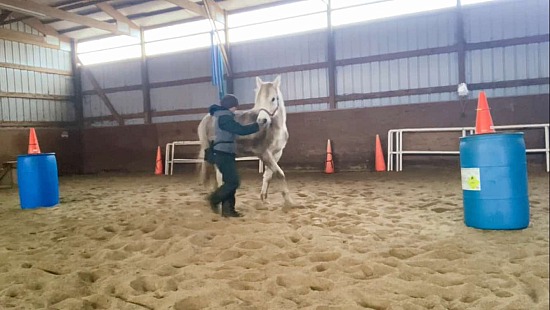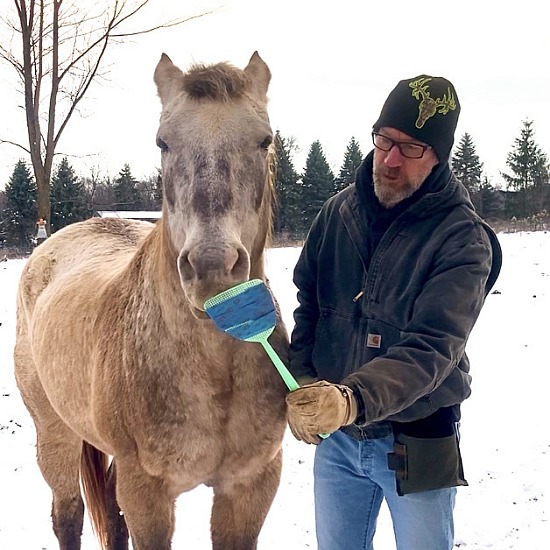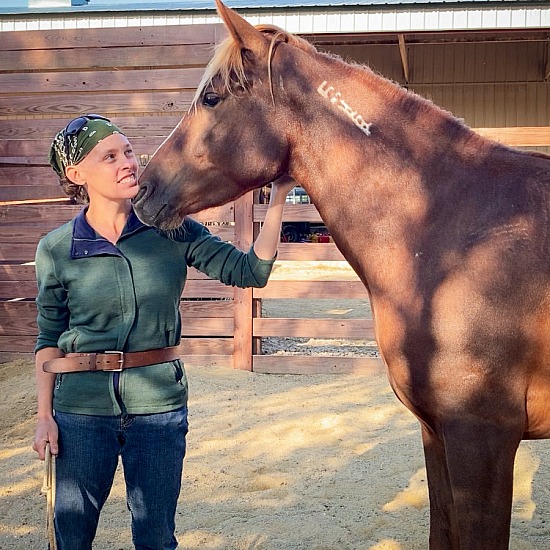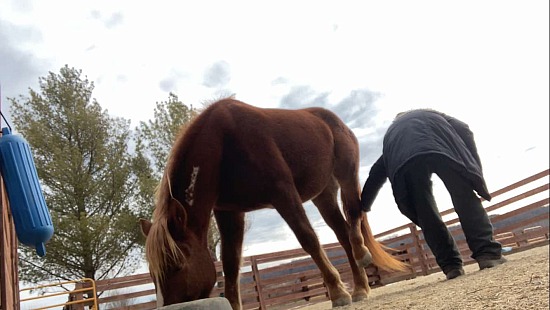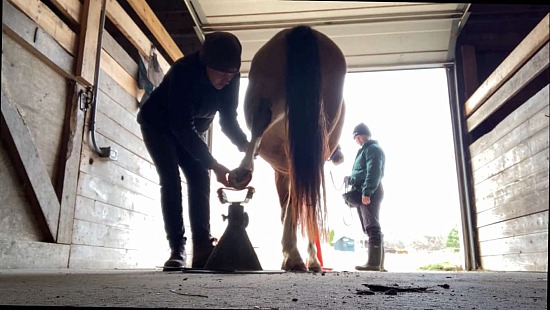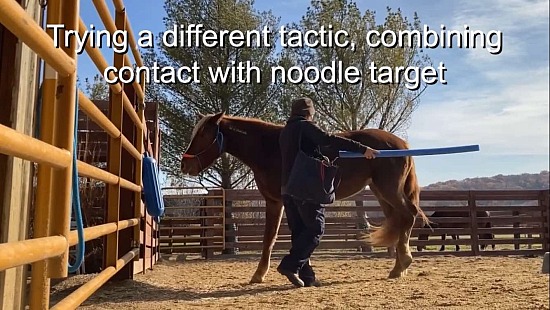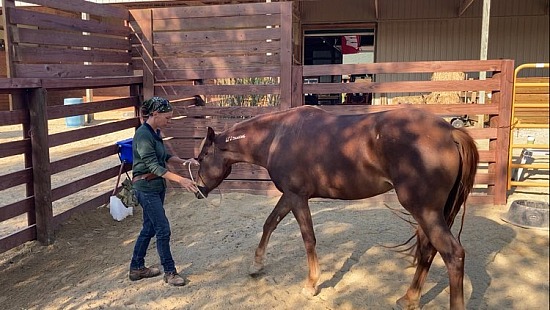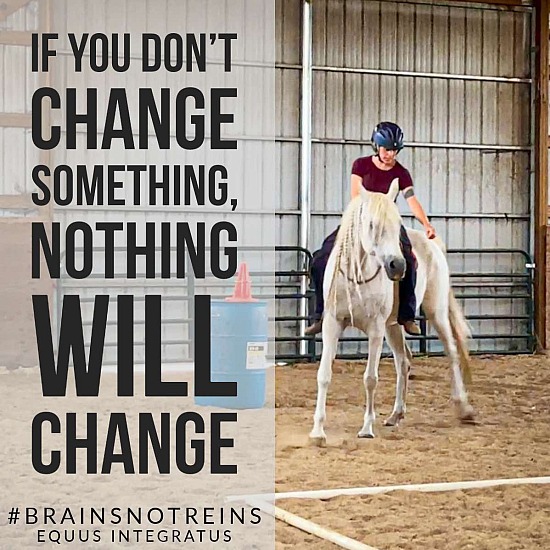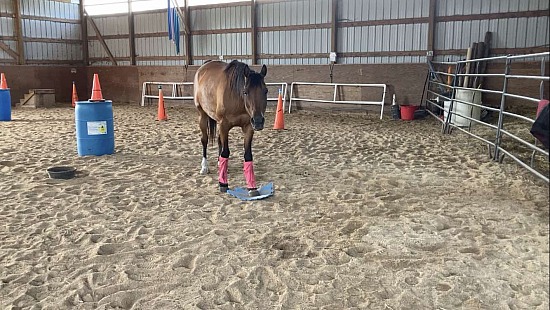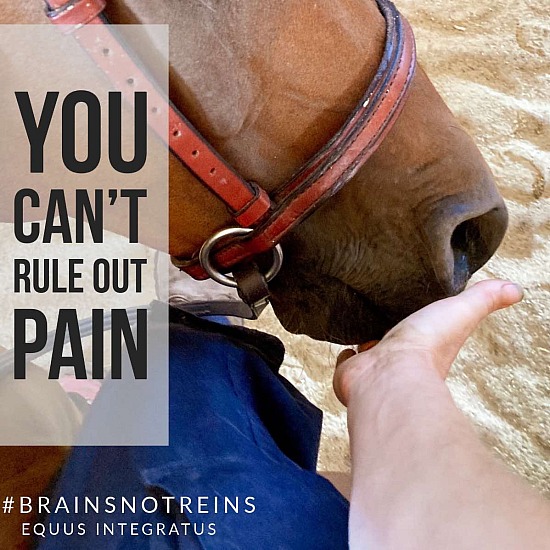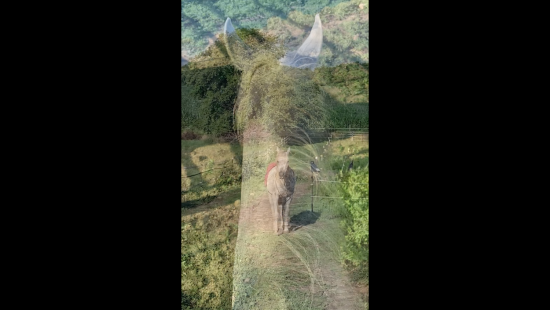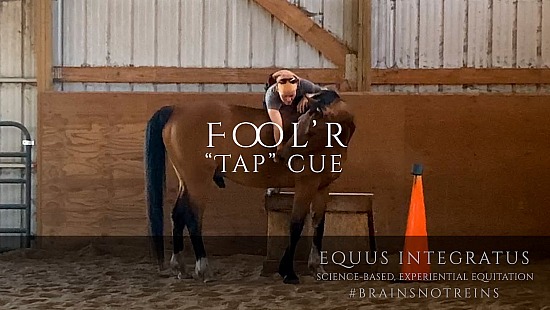Affordances
Over the past week or so, I’ve been looking at the world through the lens of affordances. I received an electric fireplace and hadn’t decided where to put it before it was assembled. The cabinet and insert are not attached to the base, so I had to move the whole unit entirely from the base, or take it apart. There was a half-assed way to move it as well (remove the cabinet to relieve some weight, which I also did), but I wanted to see what it would take for my body to move it the way it was, just to see if I could find an affordance and use it as a way to organize my body in a novel way.
Considering the ethics of training and behavior modification
Following on from a previous post, someone asked a question about how changing emotions was unethical. I can’t say I think it’s unethical, but we do need to think about what we’re asking from the horse.
Stuck in freeze mode
I was part of an immensely cool discussion with @pantherflows and @r_eflectiveequine, among others, about what we do when a horse is stuck in freeze mode, staring at something. I shared an idea I use either for crisis management or for taking the opportunity to experiment with nervous system down regulation, but not a total overload (hopefully that’s obvious - if you’re over threshold, abort mission if you can).
In what way could this be true?
Language warning: I speak Pirate sometimes.
Had a salty exchange with a guy that referred to a metaphor about students needing to know the complete science of painting before being able to actually paint a picture, and how that parallels the idea that “Science based horse training is based on intellectual understanding instead.“ Inferring that no one who could be called “science-based” has any knowledge of “...getting on the horse and discovering its unique movement and balance, then improving it.”
What’s really important here, tasks or learning?
Lightning, mustang mare that I’m teaching to cooperatively halter. She’s not easy to catch 100% of the time, but it’s not necessarily an ordeal.
Restraint during cooperative care
This is the second session of cooperative oral syringe training with Bucky, a mustang mare of one of my clients’. I started with just targeting her muzzle to the syringe, and added the hand target to the bridge of her nose as a separate piece after that, combining them when I was sure she understood both.
Brandi, hind foot hold
This is the first time I’ve been able to touch Brandi’s hind foot with my hand. As always, some notes:
Using barrels for bend
Some notes on using what you have to develop skills you’d like to have, such as lateral work on the ground:
Targeting as a way to test a horse’s sense of sight
Here is why it pays to know as much as you can about a horse’s ethology, cognitive abilities, and potential physical issues, both on a species level and an individual level. TLDR;/moral of the story: when something doesn’t work, ask why. Especially if everything else is working.
B gets her feet done
Babymustanghorse B (Brandi, because everyone gets 17 dumb nicknames) had her feet done yesterday. The choice was made to sedate her for a safer time for everyone, but she was perfect. I don’t have any video, which is too bad, But it also meant I got to be really present for her and for me.
Brandi, hoof handling update
A short update, working towards lifting back feet with hands rather than the pool noodle.
Clio, foot handling, November 2024
There are myriad reasons a horse has trouble being comfortable and cooperative, generally originating from physical, mental, and/or emotional discomfort (and frequently all 3).
Sometimes there’s a compromise between fully cooperative care and railroading a horse into a healthcare procedure, especially in a training situation where the procedure itself isn’t imperative. Such is the situation with Clio, here. I chose to show all of the actual foot handling (albeit in fast motion) to show the rhythm of doing and not doing. While I won’t go into too much detail, below are some notes on our training session:
Brandi, foot handling
Brandi, the young mustang mare from the Sand Springs HMA in Oregon, USA. She’s been at her new home since September 6th. She can be groomed and sprayed, which my clients have worked on on their own, and haltered, which we’ve done together. I’m now starting foot handling with her. To be brief, here are some notes about my approach:
New client horse, Brandi
This is Brandi. She’s a three-year-old mustang, unhandled, from the Sand Springs HMA in Oregon, USA. She belongs to some lovely clients who have five other mustangs they’ve already tamed/gentled (I dislike both of those terms, but don’t have a better one). Brandi arrived on Friday September 6th, and this video was taken four days later.
If you don't change something, nothing will change
I’ve had a couple people recently talk to me about looking for holes in their horses’ training. Maybe it makes more sense to look for what they CAN do. You can teach them anything by building on what they already know, but they have to be physically, emotionally, and mentally capable of it. More than that, YOU have to be able to tell what they can do and what they’re ready for.
Sketching vs completion
I’ve been working with Fool’r since the very end of April. I’ve needed to have a rotation of behaviors to select from so I wasn’t drilling any one thing, in order to keep him calm and engaged. We have worked on SS/FF (stand still, face forward), but it was initially a challenge as he can sometimes be a somewhat anxious horse. Now that we’ve had some time to learn the game from different perspectives doing different things, we can begin to refine all the things we’ve started in our time together.
You can't rule out pain
I jammed my middle finger a few days ago, and it really hurt. It still does, actually. It changed how I moved, how I used my hands, and even what things I chose to do or not do. I’m a person. I can talk. Had I not complained about it, no one would ever have known I had any pain as I was still able to do all the things I normally do, but with subtle compensations, some hesitation, and in some cases a lot more time. You’d never know to look at it that anything was wrong - no obvious swelling or bruising, just a subtle change in posture that made it look like I was vaguely flipping off the world as I went about my day.
Another podcast! And a short bridleless ride
A few weeks ago I was honored to be invited back to Trudi Dempsey's "Lead a Horse to Water" podcast, and as I’ve mentioned, we talked about bridleless riding. One of the points we talked about was the opportunity for exploration, on a number of levels.
Fool'r - "tap" cue training plan and process
This is a longer video going through a training plan for teaching a cue involving tapping on the shoulder to ask the horse to turn his head to receive food. It's deliberately and unapologetically boring in that it's not sliding stops or jumping huge fences or canter pirouettes, but it is a horse saying "yes" to me asking if he's comfortable with me over his back when he has the option to say "no."

Loading more pages
